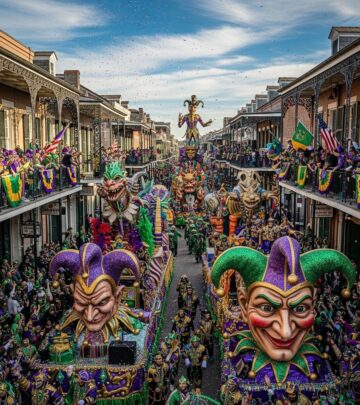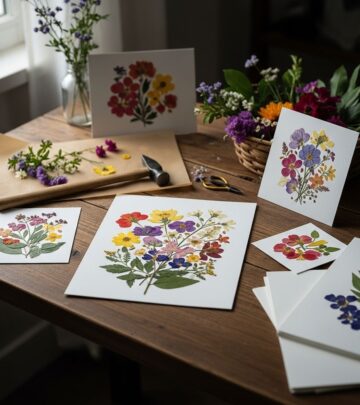Unraveling Black History: The Knitting Bartender’s Legacy, Craft, and Impact
Mixology and needlework unite to showcase enduring ingenuity and unity within Black communities.

Black History Month provides a dedicated space for celebrating the often-overlooked contributions of Black creators, visionaries, and everyday changemakers. Two worlds—bartending and knitting—stand at a unique crossroads of artistry, hospitality, and living tradition within Black communities. While these crafts differ in texture and audience, they are binded by a shared heritage of creativity, resilience, and an enduring quest for recognition.
The Overlooked Artistry: Black Bartenders and Their Hidden History
The history of Black bartenders stands as a powerful testament to both adversity and innovation. From the era of the antebellum South, when enslaved Africans mastered mixology within elite settings, to the post-Civil War years as entrepreneurs and culture-shapers, Black bartenders have been unsung architects of hospitality and cocktail culture.
- Cato Alexander, one of the first renowned Black bartenders of New York City in the early 19th century, set new standards for quality and service, laying the foundation for future generations.
- The Harlem Renaissance brought a vibrant arts and cocktail scene, with Black bartenders at the forefront—serving, creating, and pushing the boundaries of mixology.
- Despite being central to these advancements, the stories of pioneering Black bartenders were often erased from dominant narratives in hospitality.
The Modern Revival—Celebrating Black Excellence in Hospitality
Today, the story is shifting. Across cities like Detroit, a new generation of bartenders such as John Neely, Andre Sykes, and Lisa Carielle are reclaiming and reinventing the space.
- Initiatives such as Black on Both Sides are actively creating platforms to honor and showcase Black professionals in service industries, from bartenders to DJs, fostering community and cultural pride.
- Such movements challenge the rarity—and even spectacle—of all-Black cocktail events by establishing them as a cultural norm.
- The goal is to recognize both visible pioneers and those “hidden in plain sight” who have long contributed to hospitality without recognition.
Crafted in Silence: Knitting’s Hidden Threads in Black History
Knitting, often dismissed as a passive domestic pursuit, has deep roots in Black communities; its significance, however, has remained largely invisible, woven quietly in the margins of literature, archives, and family storytelling.
- Myths persist, such as “Black people don’t knit,” driven by a lack of visible representation and documentation in mainstream media and historical accounts.
- Recent diversity and inclusion conversations within the knitting and crafting world are only now beginning to address systemic underrepresentation.
- Images of historical figures like Sojourner Truth quietly knitting challenge assumptions and invite a deeper look into these overlooked traditions.
Knitting as Community Building—and Resistance
The act of communal knitting has often served as both comfort and political action during periods of crisis:
- During wartime, Black women across the world, from the US to Jamaica, formed knitting circles to support troops and strengthen community ties.
- Artefacts and anecdotes indicate that Caribbean and African women frequently knitted essential goods for soldiers and loved ones, representing invisible acts of care and resistance.
- Crafting was at times co-opted for assimilation—Aboriginal women, for example, were encouraged to knit as a means of promoting government-sponsored integration into white society.
Intersections of Craft and Mixology: Stories of Identity and Resilience
Knitting and bartending, though distinct, intersect in remarkable ways within Black history and modern experience. Both are grounded in:
- Skill and Creativity: Crafting original cocktails or intricate knits demands technical expertise, improvisation, and a discerning artistic eye.
- Community and Hospitality: Whether gathered around a knitting circle or seated at a bar, these crafts connect people, foster warmth, and communicate shared heritage.
- Resilience and Visibility: Practitioners of both arts have endured invisibility or marginalization, yet persist in claiming—and reshaping—public and private spaces.
| Craft | Historic Role | Modern Movement |
|---|---|---|
| Bartending | From servitude to entrepreneurial leadership; cultural tastemakers in the Harlem Renaissance | Pop-up events, industry awards, cultural spaces honoring Black excellence |
| Knitting | Acts of service (war knitting), cultural preservation, often invisible labor | Instagram activism, designer visibility, inclusion campaigns, community exhibits |
Breaking Down Myths and Redefining Visibility
Both crafts have faced, and continue to face, myths and marginalization that render Black contributions invisible. This invisibility is sometimes reinforced by the very structures that govern arts, hospitality, and craft communities.
- Black individuals have often been cast as models rather than makers or designers in craft publications.
- Documented evidence—such as photos of young Black women knitting for war efforts—remain rare and under-celebrated.
- Efforts to assimilate or erase distinct practices through institutional or political means have further complicated the narrative.
Visibility, therefore, is both a political and cultural act. Representation matters: from spotlighting Black excellence behind the bar to featuring Black designers and crafters at the forefront of their respective industries.
Spotlight: Stories in Craft and Cocktails
Real change comes not only from recognizing the legacy of prominent figures but also from uplifting stories that have long gone unrecognized:
- Hidden in Plain Sight—the narrative thread that binds generations, revealing the multitude of Black makers whose work has shaped both physical and social landscapes.
- Initiatives like Black Poppy Rose, launched to honor Black and Caribbean contributions to wartime efforts—including the overlooked labor of Black knitters.
- The global diaspora: Fiji’s Military Forces Knitting Circle or women in Jamaica knitting for the troops, highlighting a worldwide tradition of silent support and activism.
Today’s Movement: Advocacy, Inclusion, and Celebration
The contemporary landscape for Black bartenders and knitters has shifted—though legacies of exclusion persist, new voices and platforms challenge the status quo. They advocate for broader visibility and structural change in both fields.
- Advocacy within the Crafting World: Organizations and online communities have emerged to support Black designers, writers, and crafters, pushing major brands to recognize diversity.
- Mentorship and Community: Pop-up cocktail bars and all-Black craft collectives foster learning and cross-generational connections.
- Online Storytelling: Social media, blogs, and digital exhibitions enable Black crafters and bartenders to share their stories, inspire others, and find supportive audiences.
A Living Tradition: Inspiration for the Next Generation
For many young Black creatives, representation in craft and hospitality offers not only a sense of belonging but inspiration and possibility. By honoring the past and celebrating the present, new doors are opened for the future.
- The simple act of seeing a Black artist or bartender in a position of authority or creativity can ignite aspirations and break down entrenched stereotypes.
- Empowering initiatives encourage children—and especially young women—to embrace their talents and see themselves as shapers of culture.
Frequently Asked Questions (FAQs)
Q: Why are Black bartenders and knitters so important to cultural history?
A: Both groups represent resilience, skill, and creativity that have been underrecognized for generations. Their stories are a vital part of Black cultural heritage and illustrate the power of everyday artistry in building community and shaping histories.
Q: What role did knitting play in the lives of Black women during wartime?
A: Knitting provided Black women with a way to support war efforts, build community, and quietly resist marginalization. It also served as a form of unseen labor and care within both local and global Black communities.
Q: How are Black bartenders celebrated today?
A: Through pop-up bars, mentorship programs, social media campaigns, and industry spotlights that center Black excellence and innovation in hospitality.
Q: What obstacles have Black knitters and bartenders faced historically?
A: Systemic exclusion, racial stereotypes, lack of documentation, and barriers to visibility in both mainstream and niche communities. Despite these challenges, they continue to innovate and create community.
Q: How can I support Black makers and bartenders?
A: Elevate their work on social media, shop from Black-owned businesses, join or donate to advocacy campaigns, and educate yourself about their contributions to culture.
Further Reading and Resources
- Michigan Chronicle: The Legacy of Black Hospitality: A Toast to Black Bartenders
- Loop Knit Lounge: Hidden in Plain Sight – In Honour of Black History Month
- GGMadeIt: Knitting in Black History
Conclusion: Stitching Together Tradition and Innovation
Black bartenders and knitters alike have spun resilience and creativity into the very fabric of cultural life. Their stories underscore the value of artistry whether it’s behind a bar or in the gentle clatter of needles. Recognizing and celebrating these traditions moves us closer to a future where every maker is visible and every contribution matters.
References
- https://michiganchronicle.com/the-legacy-of-black-hospitality-a-toast-to-black-bartenders/
- https://www.loopknitlounge.com/hidden-in-plain-sight-in-honour-of-black-history-month/
- https://ggmadeit.com/knitting-in-black-history/
- https://talesofthecocktail.org/celebrating-black-history-month-from-a-bartender-to-the-bartender/
- https://www.washingtonian.com/2020/06/19/the-remarkable-story-of-vivien-thomas-the-black-man-who-helped-invent-heart-surgery/
- https://www.safebarnetwork.org/post/change-makers-past-and-present-a-black-history-month-celebration
- https://www.youtube.com/watch?v=eo_HuAjI7DY
Read full bio of medha deb












